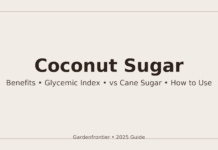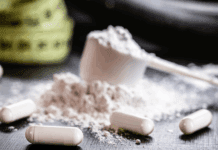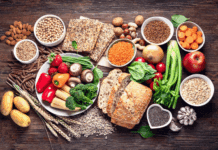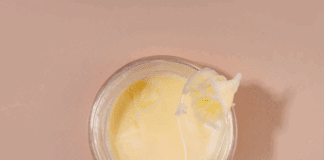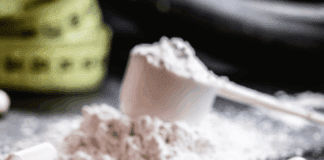Cinnamon Sensation In Diabetes
His blood sugar level, which was rising, is much improved simply because he is taking cinnamon daily, according to both Wagner and his physician.
Wagner is under the care of internist Frank L. Hart in Hilton Head, who has prescribed cinnamon to about 150 patients over the past year and a half.
Hart finds that although not every patient with elevated blood sugar responds, it “works wonders for others.”
He is among a slowly expanding group of physicians who find that cinnamon appears to help patients with type 2 diabetes and those with moderately elevated blood sugar levels, a so-called pre-diabetic state.
The first inkling that cinnamon could be more than a spice in your muffin arose from studies by Richard A. Anderson at the Human Nutrition Research Center in Beltsville, Md., an arm of the U.S. Department of Agriculture.
Scientists were testing foods that might boost insulin efficiency in type 2 diabetics and found “the champ” to be apple pie. Insulin helps the body to metabolize sugar.
“We thought it might be the apples. It wasn’t,” said Anderson. “We analyzed every ingredient of the pie and finally found the cinnamon.” Follow-up test tube studies revealed the most active ingredient in cinnamon to be methyl hydroxy chalcone polymer, which the researchers said help convert glucose (sugar) to energy.
One of Anderson’s associates, Alam Khan, a Fulbright scholar from Pakistan, subsequently conducted a study in Pakistan on 60 subjects with type 2 diabetes.
He found that one-quarter teaspoon of cinnamon taken twice daily for 40 days lowered participants’ blood sugar levels. Khan’s results were published in Diabetes Care, the journal of the American Diabetes Association.
Several subsequent studies by other researchers have confirmed Khan’s results, while others have failed to replicate his findings.
Dr. Erwin Klein, professor of medicine and endocrinology at North Shore University Hospital in Manhasset, cited research in the Journal of Nutrition that found cinnamon ineffective. “Why to look for such an agent when we have so many effective ways to control sugar in [type 2 diabetes]?” asked Klein.
Dr. Andrew Greenberg, head of the Obesity and Metabolism Laboratory, USDA Human Nutrition Research Center on Aging at Tufts University in Boston, said that although the talk about cinnamon is “intriguing,” there needs to be more research.
“I don’t think it’s something we can recommend now as a therapeutic agent. The jury is still ruling out on this,” said Greenberg.
But in South Carolina and elsewhere throughout the world, according to Anderson, physicians are acknowledging the benefits of cinnamon. Anderson recommends cinnamon extract capsules, available without a prescription.
“People think they can sprinkle it on their food once in a while, but basically, that does not work. We say you have to have one-quarter to one-half a teaspoon twice a day.”
He also warns that anyone on medication for type 2 diabetes or told they have an elevated blood sugar level should consult their physician before self-administering cinnamon.
Hart, meanwhile, said it startled his patients when he recommended cinnamon.
“They think I’m a nutcase,” he said. “But I tell them, don’t laugh. Try it.”
The cinnamon tree’s inner bark, which first appeared in Sri Lanka. It is one the oldest spices in the globe, as it was mentioned in the Bible and highly revered by Romans.
It can be found in nearly all the great cuisines of the world, as well as across a wide range of dishes.
It adds warmth and depth to the curried dishes of the Subcontinent. It is used in North Africa for sweet desserts and to add flavor to many of the tajines or stews.
It is an essential ingredient in Mexico and Central America’s fiery chilli-laden dishes. It is also a popular ingredient in Europe to enhance desserts.
It is often used in Spain’s Moorish-influenced cuisines. For example, it can be paired with a delicious fruity rabbit stew. There are many old English recipes that call for cinnamon, such as the baked custards and the semolina puddings.
It’s in Scandinavia, a region that is diametrically opposite to Sri Lanka’s sweaty jungle heat, where it has found love unlike any other. Pastries are a favorite of the Finns, Swedes and Norwegians.
If you ask a Scandinavian to make a cinnamon bun, they will likely start crying. The connection with their homeland is so strong that they won’t mind. We’re going see if we can make a few Norse spirits happy with these sweet, soft, fluffy, sweet little guys who fill the kitchen in warm, soothing, cinnamony steam.
It’s a fine way to travel the world with a cup of coffee and one or more of these buns.
Get your apron on!
Stephen Jackson’s Cinnamon Buns Recipe
Makes 20-25 buns. Use a large bowl or a food processor to combine the yeast and warm milk. Add the sugar, cardamom seeds, and egg.
Let the yeast bubble for a while, then add the flour, and mix until the dough is elastic.
Finally, add the butter. If the dough becomes too sticky, add the raisins and some flour. The dough should be loose and soft. Place the mixture in a bowl and cover it with a tea towel.
Let it rise in a warm area for at least two hours. Next, split the dough in 2 parts and roll the dough out onto a lightly floured surface until it is about cm thick.
Roll the dough tightly and sprinkle it with cinnamon and sugar.
Cut the roll into triangles, about 2cm each side and 4cm the other, using a sharp knife. To prevent them from unravelling when they bake or rise, press the bun’s thinner end with your thumb.
Sprinkle the buns with more beaten eggs and a sprinkle of cinnamon. Let it rise with cover on in a warm place for 20 minutes.
Turn the oven on to Gas 6 or 200C. Bake the buns for 10-14 minutes until they are golden and risen.
Hot or cold, enjoy with a cup of strong coffee.



